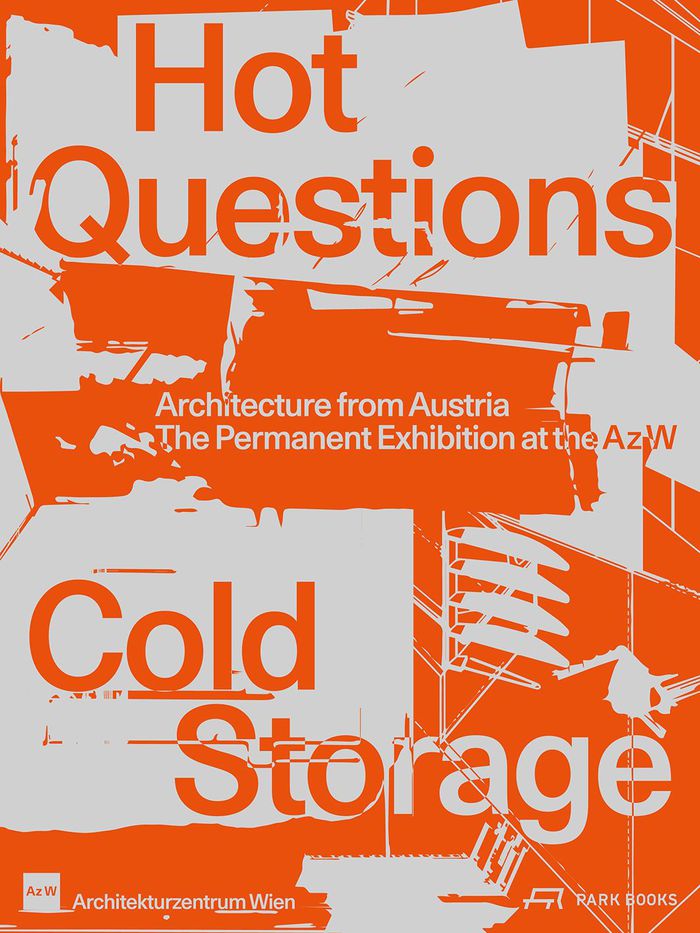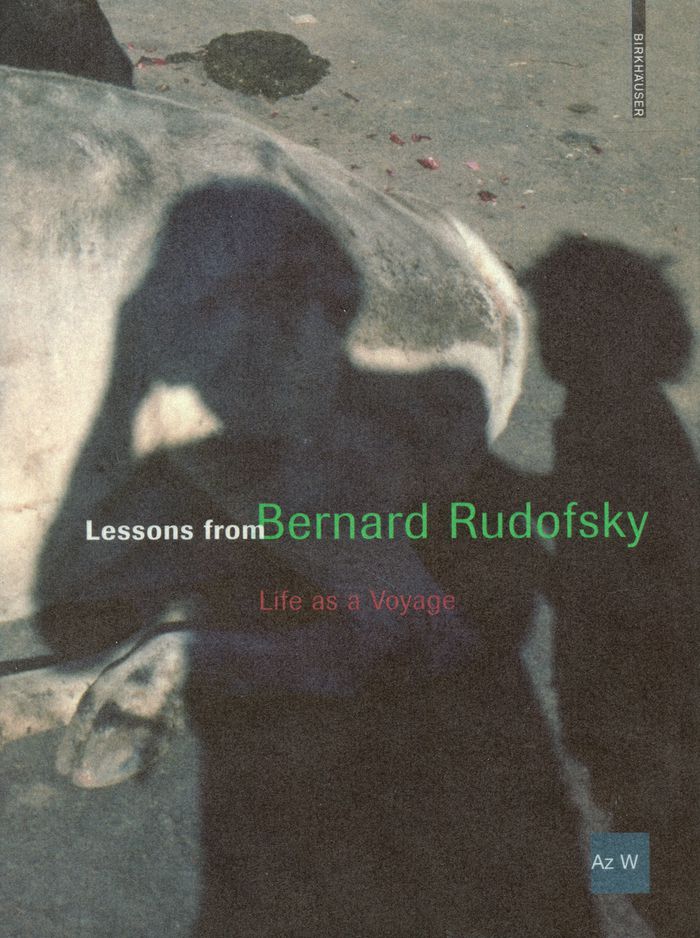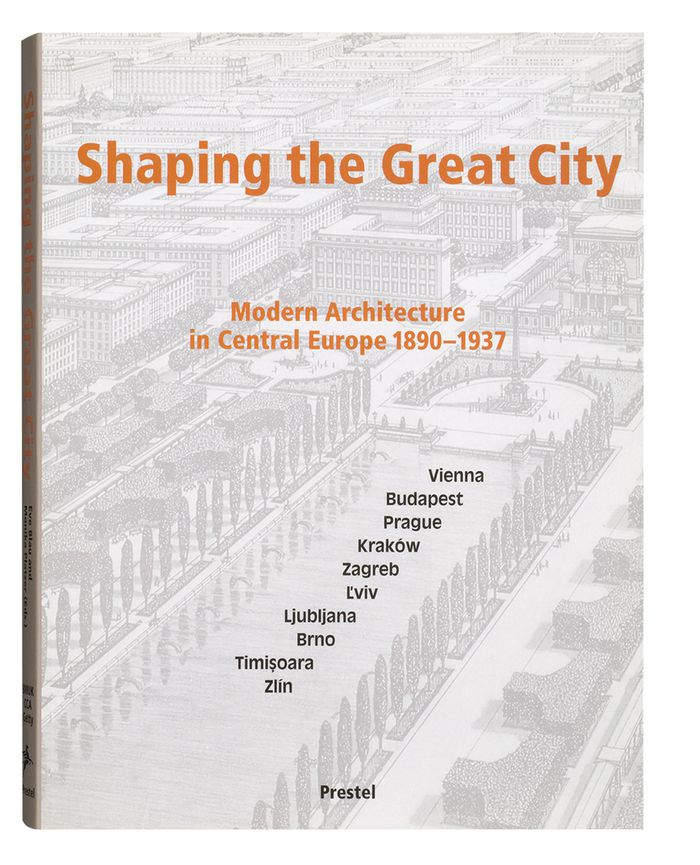Hot questions - Cold storage: Architecture from Austria. The permanent exhibition at the Az W
$85.00
(disponible sur commande)
Résumé:
The new permanent display of Architekturzentrum Wien’s (Az W) collection is a milestone in the presentation of architecture and its social dimensions. ''Hot questions—cold storage'' is published alongside this comprehensive exhibition on Austrian architecture of the twentieth and twenty-first centuries, featuring color images of all exhibits, concise texts, and thematic(...)
mai 2023
Hot questions - Cold storage: Architecture from Austria. The permanent exhibition at the Az W
Actions:
Prix:
$85.00
(disponible sur commande)
Résumé:
The new permanent display of Architekturzentrum Wien’s (Az W) collection is a milestone in the presentation of architecture and its social dimensions. ''Hot questions—cold storage'' is published alongside this comprehensive exhibition on Austrian architecture of the twentieth and twenty-first centuries, featuring color images of all exhibits, concise texts, and thematic essays. This book reexamines the country’s architectural culture of the last 150 years, situating it in its cultural, social, and political contexts. Each chapter is prefaced by a question, asking, for example, about the impact of capitalism on our cities and villages or about the contribution architecture can make to our survival on the planet. These ''Hot questions'' bring to life the ''Cold storage''—the silent repository of the collection’s holdings. This book offers a multi-perspective narrative that presents Austria’s building history with all the developments, ideologies, and institutions it comprises. The social relevance of objects and documents is revealed through questioning and visualization, in connecting research and the museum’s mission to collect.
$94.95
(disponible sur commande)
Résumé:
Following the liberation and subsequent occupation of Austria at the end of World War II in spring 1945 by the victorious powers Britain, France, the United States, and the Soviet Union, Vienna soon became a central stage for the quickly emerging Cold War. The struggle of differing political systems was also carried out in the field of architecture. Cold War and(...)
Cold war and architecture: the competing forces that reshaped Austria after 1945
Actions:
Prix:
$94.95
(disponible sur commande)
Résumé:
Following the liberation and subsequent occupation of Austria at the end of World War II in spring 1945 by the victorious powers Britain, France, the United States, and the Soviet Union, Vienna soon became a central stage for the quickly emerging Cold War. The struggle of differing political systems was also carried out in the field of architecture. Cold War and Architecture sheds new light on the building activity in postwar Austria and its main protagonists. For the first time, this book explores the lines of architectural debates of the time in the context of the global political and cultural conflict of East vs. West. With its transnational perspective, it changes our view of architectural history and postwar society. During the ten-year occupation period, Austria experienced a transition from authoritarian government to democratic consumer society. Each of the four Allied powers established its own extensive cultural program. Architectural exhibitions became important instruments of such educational schemes with the objective of a new social order. British, American, French, and Soviet cultural policies served as catalysts for ideological convictions.
Modernisme
$49.95
(disponible en magasin)
Résumé:
"L'idée de la grande ville : L'architecture moderne d'Europe centrale, 1890 - 1937" examine pour la première fois l'explosion d'idées neuves en architecture qui a marqué les dernières décennies de l'empire des Habsbourg et les premières années aventureuses des nouvelles républiques d'Europe centrale. Véritable champ de(...)
L'idée de la grande ville : l'architecture moderne d'Europe centrale, 1890-1937
Actions:
Prix:
$49.95
(disponible en magasin)
Résumé:
"L'idée de la grande ville : L'architecture moderne d'Europe centrale, 1890 - 1937" examine pour la première fois l'explosion d'idées neuves en architecture qui a marqué les dernières décennies de l'empire des Habsbourg et les premières années aventureuses des nouvelles républiques d'Europe centrale. Véritable champ de bataille culturel entre différentes traditions et aspirations nationales, religieuses, ethniques et linguistiques, la région n'en était pas moins le foyer d'un profond idéal cosmopolite. S'intéressant à la ville en tant que modèle de société et milieu favorable à l'épanouissement d'une vie culturelle intense, le livre permet de découvrir une histoire remarquable où se conjuguent invention, expérimentation, sophistication et imagination - l'histoire d'architectes qui ont voulu exprimer un sens nouveau de l'urbanité et de la modernité. Ce catalogue, sous la direction d’Eve Blau et de Monika Platzer, rassemble des essais des deux directrices, ainsi que de Charles S. Maier, Moritz Csáky, Renate Banik-Schweitzer, Friedrich Achleitner, Petr Krajci et Rostislav Òvácha, Iain Boyd Whyte, Aleksander Laslo, Ihor Zuk, Jacek Purchla, Ileana Pintilie, András Ferkai, Breda Mihelic et Andrew Herscher. L'avant-propos est de Phyllis Lambert et Kurt W. Forster du Centre Canadien d'Architecture, Deborah Marrow du Getty Research Institute de Los Angeles et Rudolf Wran du ministère autrichien de l'éducation et des Affaires culturelles.
Publications du CCA
$69.95
(disponible en magasin)
Résumé:
Bernard Rudofsky was neither an architect nor a theorist in the usual sense. At the start of his career he completed a number of houses in Italy and Brazil, where he employed the formal language of the Modernists even though his writings appear to indicate he rejected their teachings. From the 1940s onwards, Rudofsky was primarily engaged as a critic and culture(...)
Publications du CCA
juin 2007, Vienne / Montréal / Los Angeles
Lessons from Bernard Rudofsky : life as a voyage
Actions:
Prix:
$69.95
(disponible en magasin)
Résumé:
Bernard Rudofsky was neither an architect nor a theorist in the usual sense. At the start of his career he completed a number of houses in Italy and Brazil, where he employed the formal language of the Modernists even though his writings appear to indicate he rejected their teachings. From the 1940s onwards, Rudofsky was primarily engaged as a critic and culture theorist who did not just write about architecture and design, but also on topics such as clothing, shoes, eating and bathing. The common element behind all of these activities, though, was the human body, and his lamentation of the loss of sensual awareness. This comprehensive show on Bernard Rudofsky provides detailed information on his life, his travels, his various activities as an architect, designer, exhibition-maker, author and theorist, as well as about the life he shared with his wife, Berta Rudofsky. Bernard Rudofsky made a large number of exhibitions during his widely travelled and cosmopolitan life, however there has never been an exhibition about him and his work. This exhibition, the first on Bernard Rudofsky in the world, has not been conceived as a classical retrospective. The aim is to make the cosmopolitan Rudofsky's complex architectural concept and concept of how to live accessible to a broad public, and to address his relevance for today.
Publications du CCA
$49.95
(disponible en magasin)
Résumé:
Shaping the Great City looks at modern architecture and the city in a vast geographical area over nearly fifty years of tumultuous social and political change, bringing to light architectural developments that are only now emerging as subjects for international inquiry. How did modern architecture construct “meaning” in relation to the complex cultural traditions,(...)
Shaping the great city: modern architecture in central Europe, 1890-1937
Actions:
Prix:
$49.95
(disponible en magasin)
Résumé:
Shaping the Great City looks at modern architecture and the city in a vast geographical area over nearly fifty years of tumultuous social and political change, bringing to light architectural developments that are only now emerging as subjects for international inquiry. How did modern architecture construct “meaning” in relation to the complex cultural traditions, conflicting political agendas, and historical narratives of modernizing urban society in the cities of central Europe? What role did the cities themselves—as the principal arenas of public culture in the multinational, polyethnic, and pluricultural Hapsburg Empire, then in the successor republics—play in the evolution of modern architectural culture? These questions remain pertinent to the current relationship between cities and the increasingly diverse cultures within them, and to the role of the great city today in the age of globalization.
Publications du CCA




